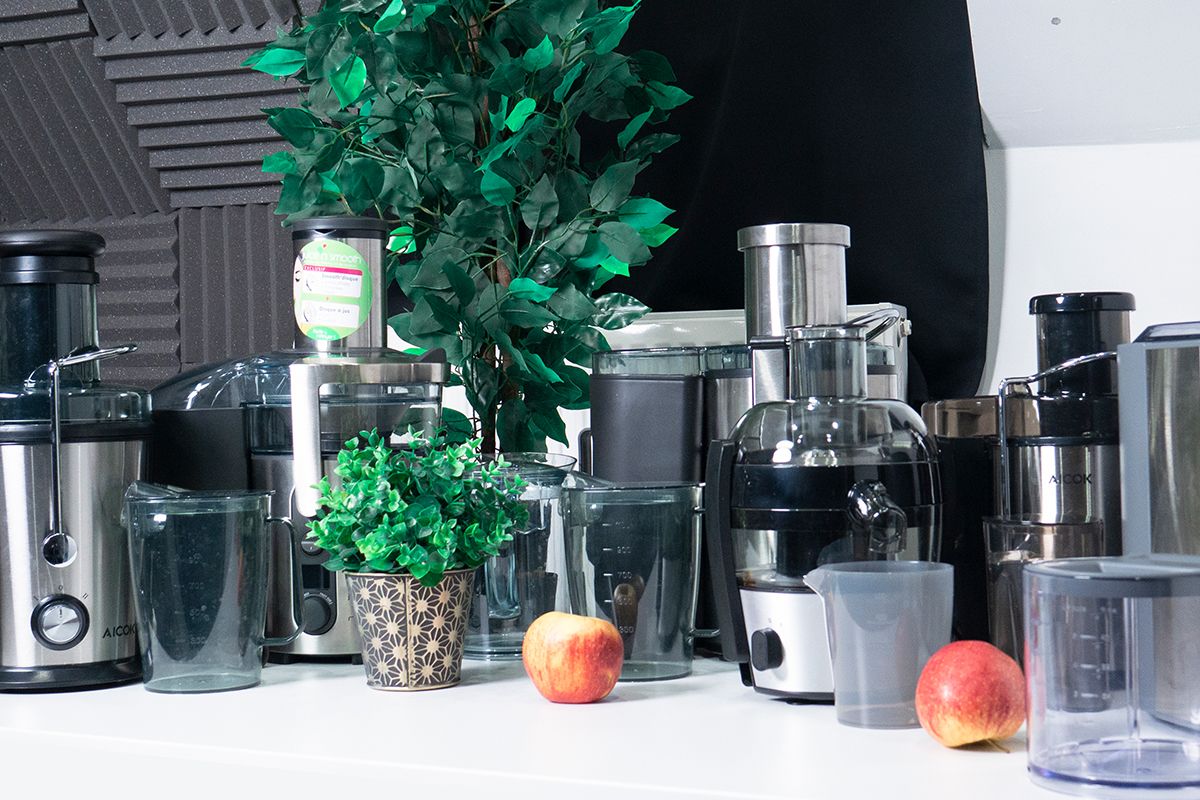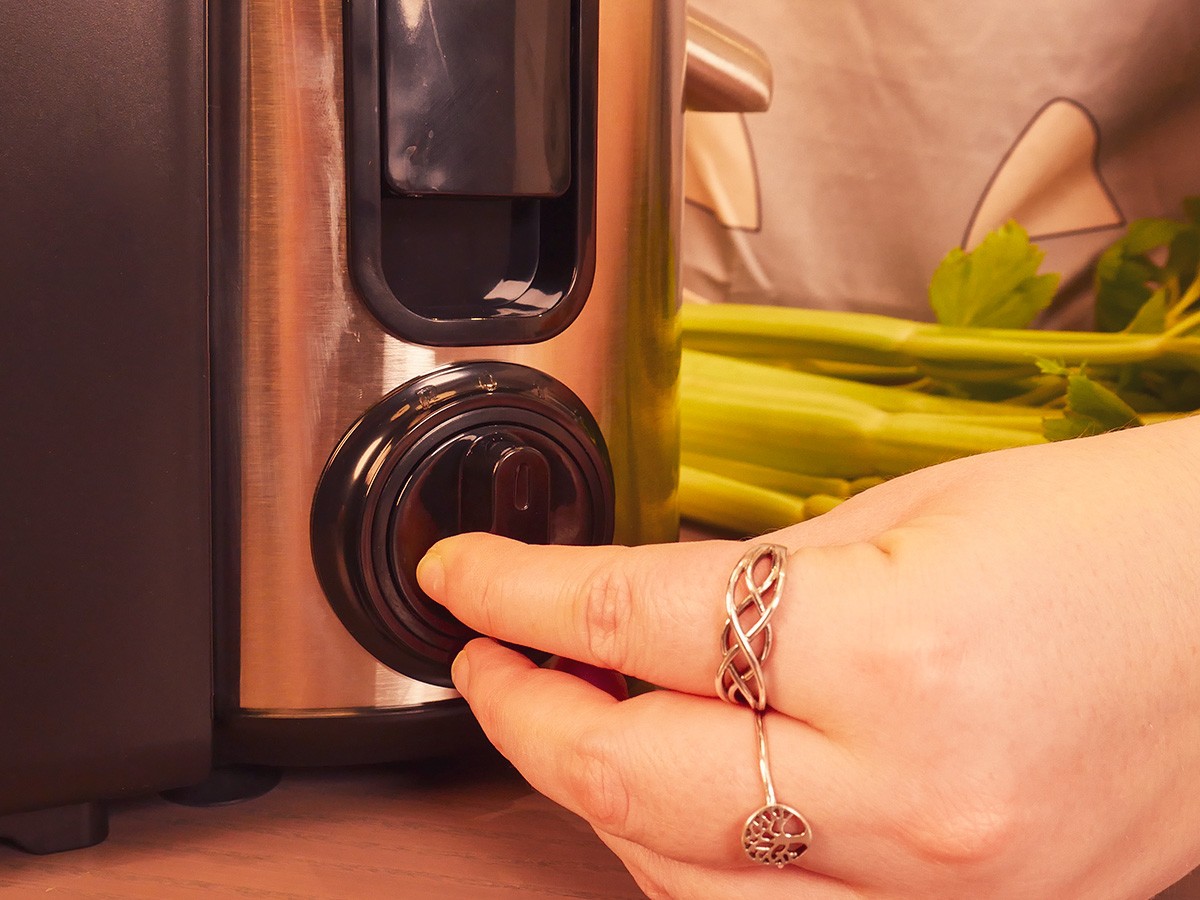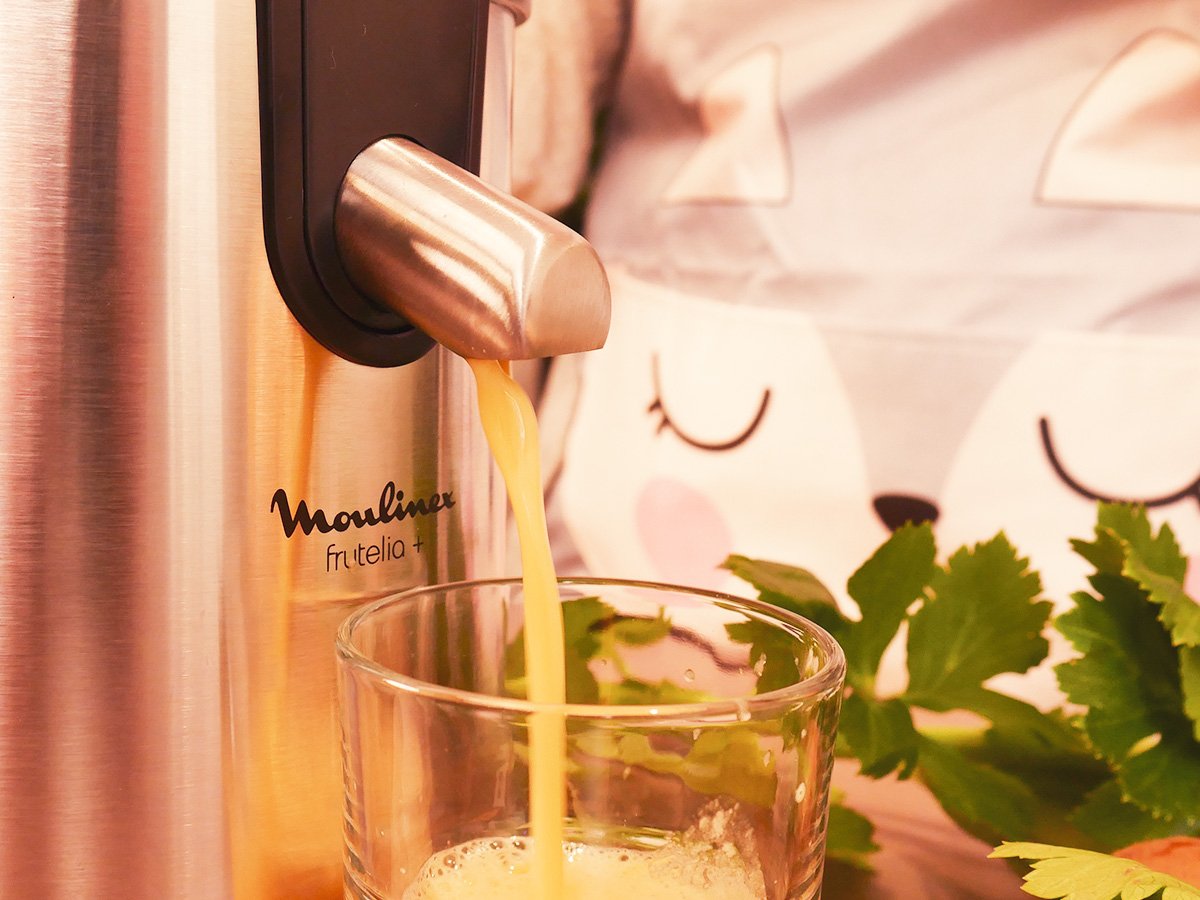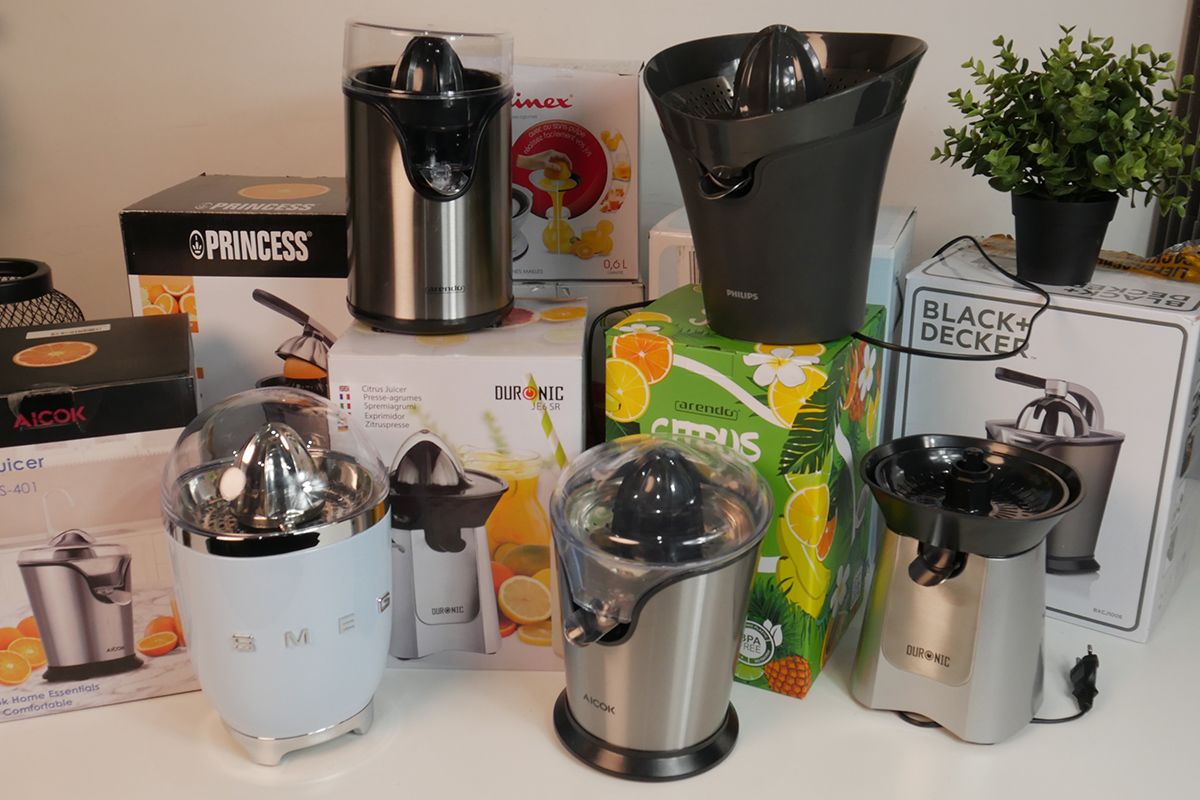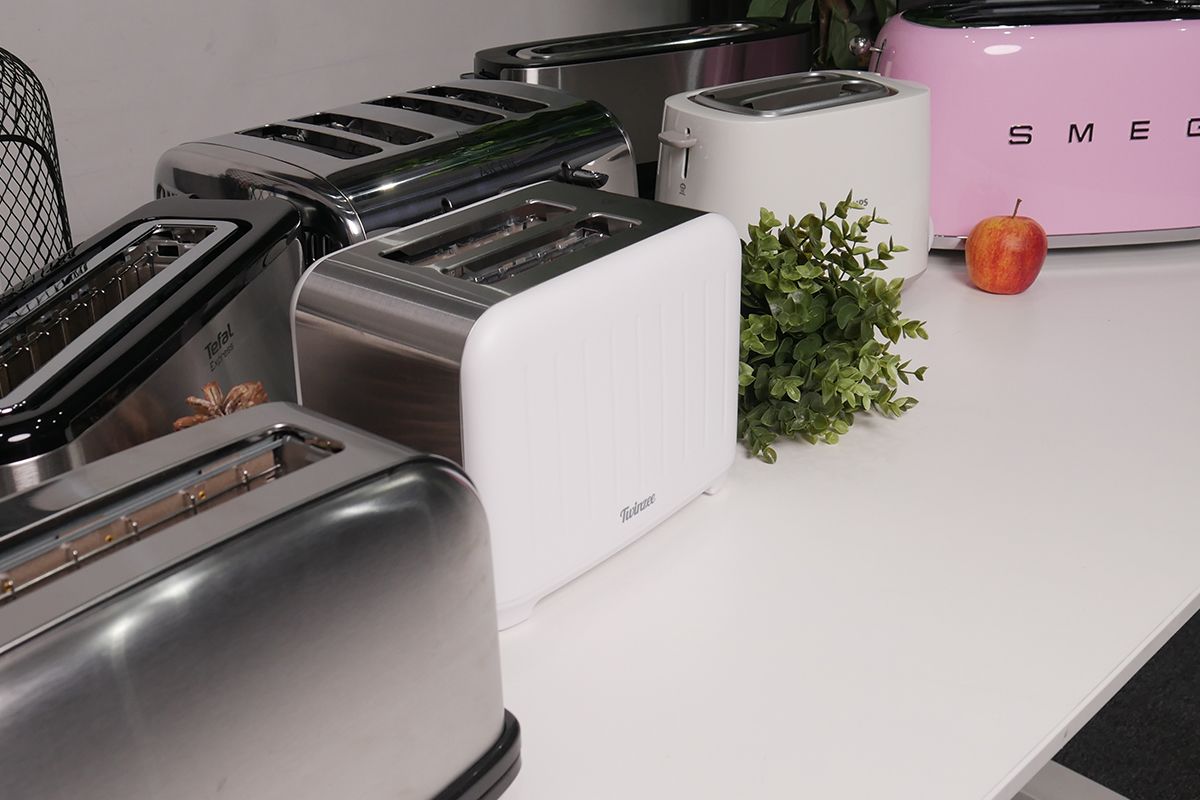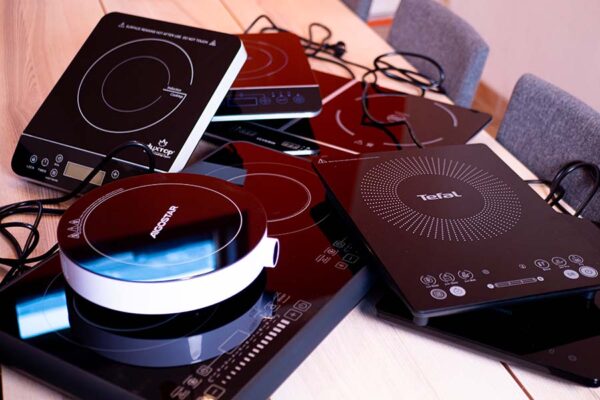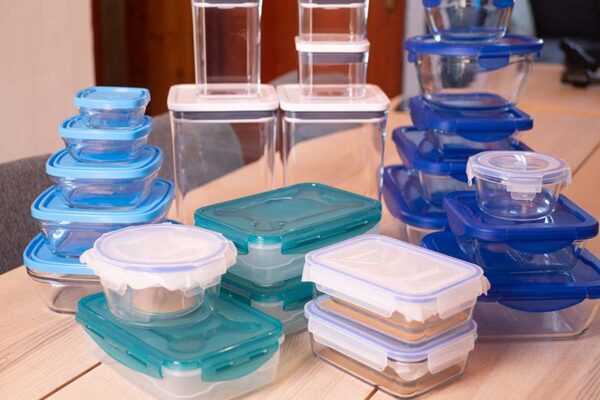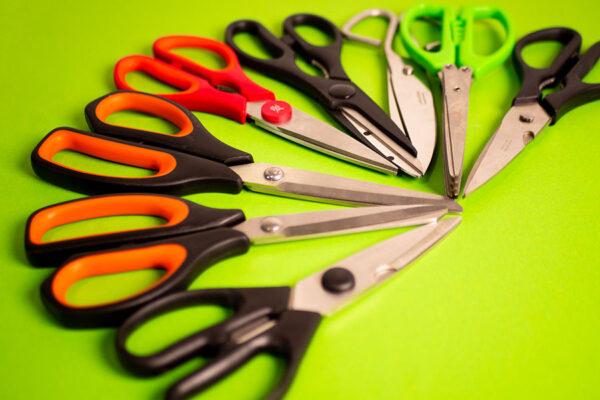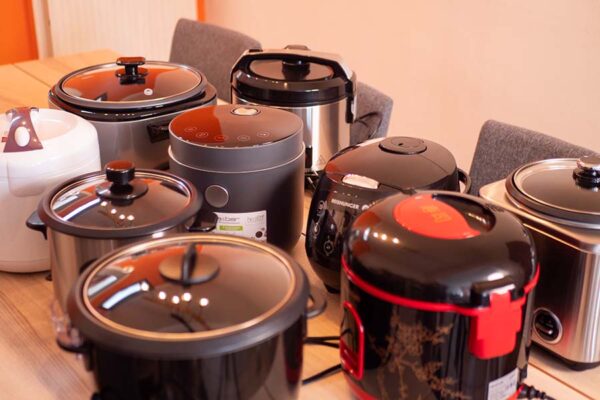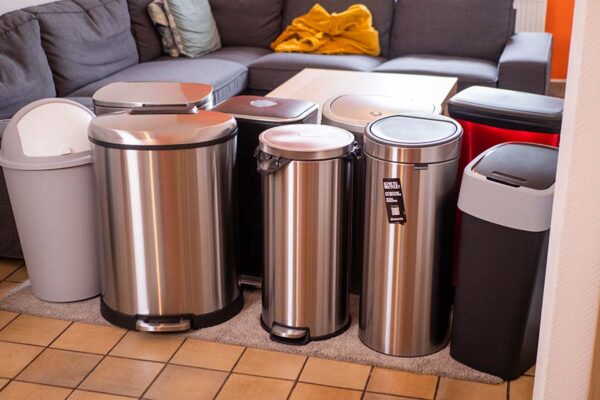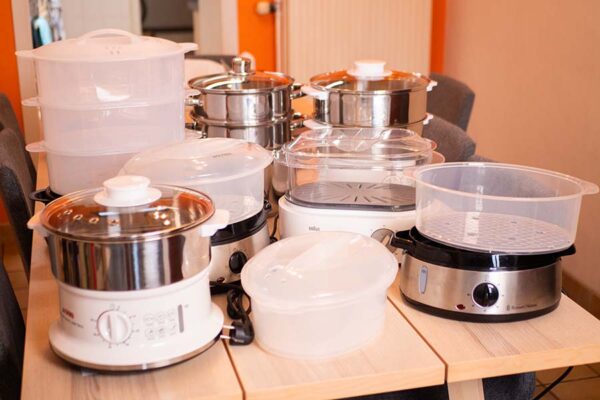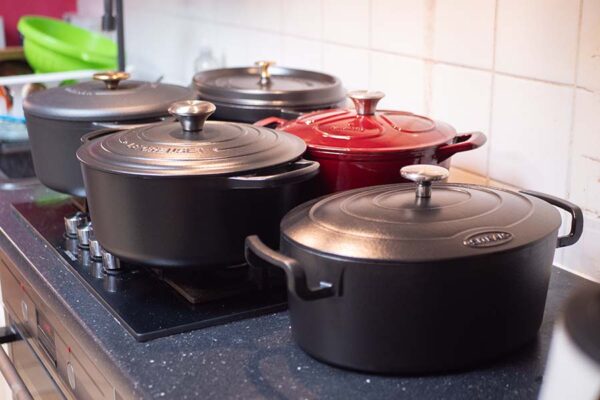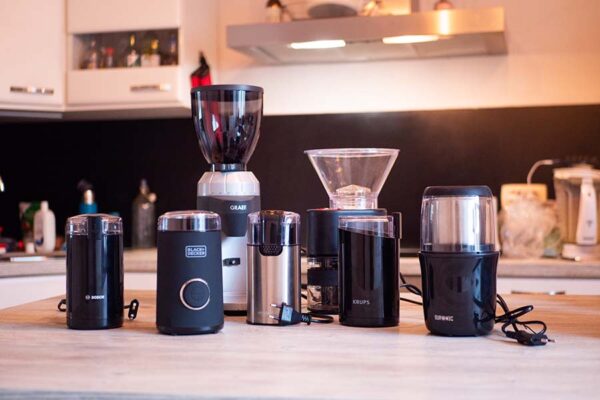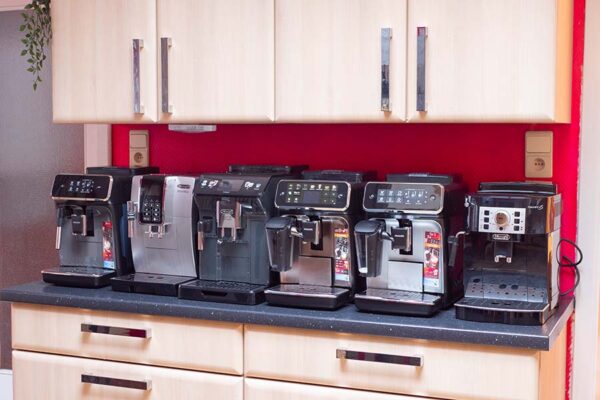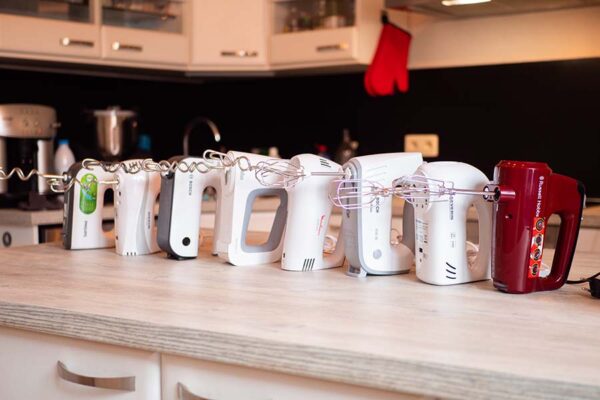Posted on 31 May 2022
Philips HR1836
This model is the most compact and easy to assemble of our selection. With its ‘QuickClean’ technology, what you lose in food cutting time, you gain in ease of maintenance.
The Philips HR1836/00 is a 500W juicer that is very interesting both for its space-saving design and its technical qualities. Its greatest assets are its ease of assembly and compactness. However, you should not be in too much of a hurry to make your own juices, as the small chimney means that you have to cut up each fruit and vegetable beforehand. We recommend this model for one or two people.
Moulinex Frutelia
With its 2 speeds, this small 950 ml juicer is ideal if you are on a budget. Its 400 W of power allow it to be efficient at harvesting juice.
This model has a pulp collector and quality parts made of plastic and stainless steel. Its neck is 6 cm in diameter, which means that only the largest fruits (such as apples) have to be cut into pieces. Despite some contraindications mentioned in the instructions (sugar cane, ice cubes, excessively hard or fibrous fruit, etc.), many users claim to have been able to use it with many fruits and vegetables such as celery, which proved to be true during our tests. It is therefore not recommended to use it only for these, but it does allow you to juice with one or other of these ingredients from time to time. On the other hand, we regret that the pouring spout is so impractical.
Riviera&Bar PR785A
Although it is larger than some of its competitors, we were convinced during our tests by its solidity. It also stood out for its versatility and its five speeds.
The Riviera & Bar PR785A juicer convinced us with its robustness, its high-quality design and its 5 speeds, which allow you to obtain a personalised result. Made of stainless steel, it is rustproof and durable over the long term. It has a large chimney and a display that shows the selected speed. With the two discs provided, it is capable of making both fruit juices and smoothies.
Our selection
| Our choice, Best mid-range | Best budget | Best high-end |
|---|---|---|
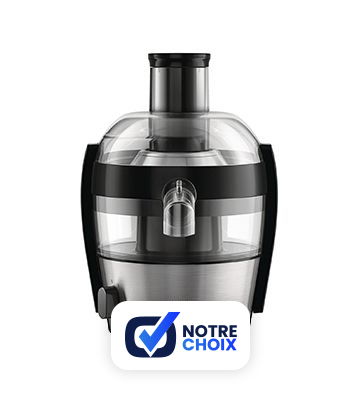 | 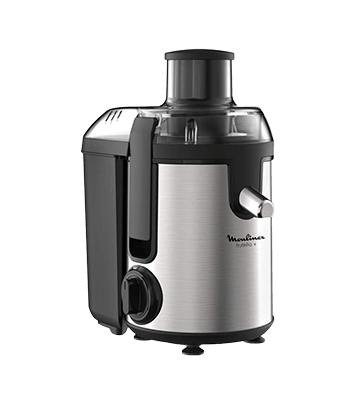 | 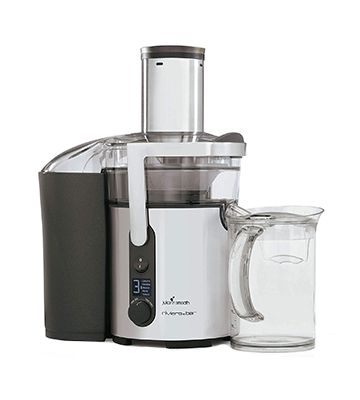 |
| Philips HR1836 | Moulinex Frutelia | Riviera&Bar PR785A |
| This model is the most compact and easy to assemble of our selection. With its "QuickClean" technology, what you lose in food cutting time, you gain in ease of maintenance. | With its 2 speeds, this small 950 ml juicer is ideal if you are on a budget. Its 400 W of power allow it to be efficient at harvesting juice. | Although it is larger than some of its competitors, we were convinced during our tests by its solidity. It also stood out for its versatility and its five speeds. |
| £ 63.01 on Amazon |
Honorable mentions
Bosch MES 3500 (£203.09 upon publication): an alternative between two ranges. This model in brushed stainless steel is equipped with a very thin sieve and a large filling chute. It has an anti-drip system, a reinforced safety system, two speeds for firm and soft fruits and vegetables. Even if we preferred the Riviera & Bar PR785A for its versatility, this model remains very interesting for its efficiency.
Why trust us ?
Selectos compares and tests hundreds of products to help you buy better. We sometimes receive a commission when you buy through our links, which helps fund our work. Learn more
How to choose your juicer?
The juicer is the most widely used appliance in our kitchens today for juicing, as it is fast and efficient.
Unlike the juice extractor, the juicer tends to produce foam, which means greater oxidation and loss of nutrients. However, it is ideal for hard fruits and vegetables or for people who have little time to prepare a fresh juice every morning. To achieve good results, however, you need to be well equipped.
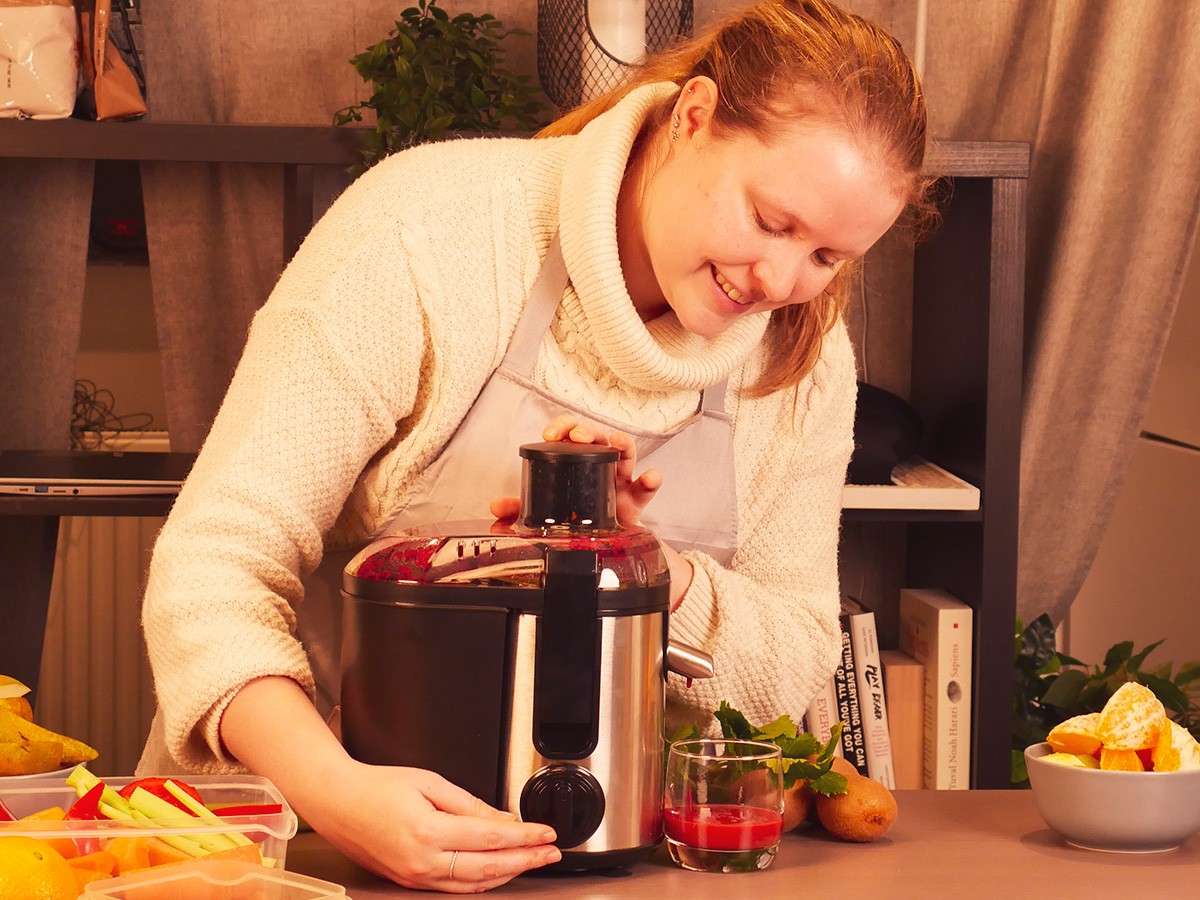
In order to distinguish between the existing models, we have identified a series of important characteristics to consider before purchasing:
- Materials: if plastic is used, make sure it is BPA (bisphenol A) free. However, we recommend stainless steel, especially for parts such as the screw or the sieve, which are in direct contact with the fruits, vegetables and juice. Preferably, choose metal blades and a model with parts that are easy to assemble and disassemble.
- Size: in terms of space, a juicer is more or less the same as an extractor. It is cumbersome, but within reason. Nevertheless, you should allow enough space for the appliance and the pulp and juice collectors.
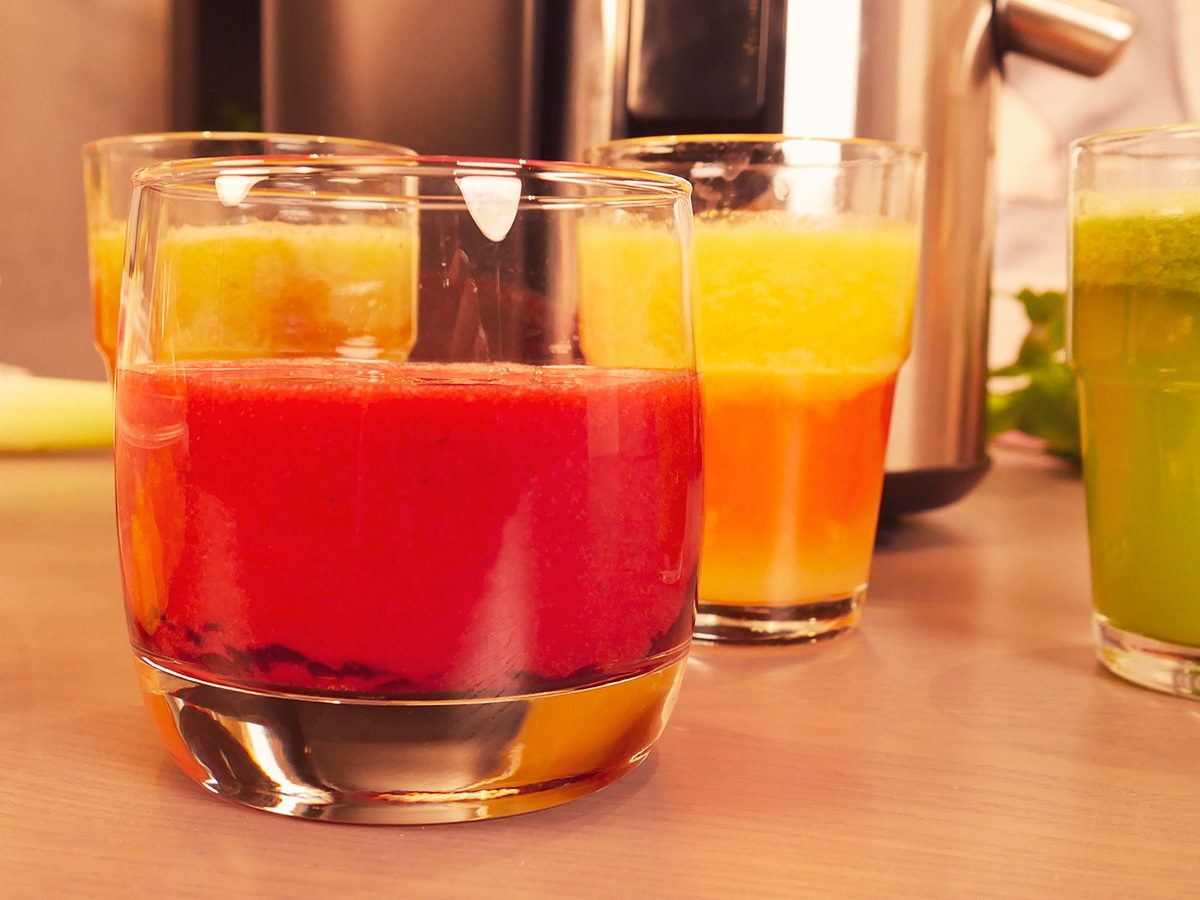
- Speed: the juicer often operates at quite high RPMs, between 6000 and 16,000. This is far from the 80 rpm recommended for the juicer, but it does allow you to prepare juice quickly. The wattage is therefore also higher (700 W is ideal). Some juicers even offer two speeds depending on the hardness of the food.
- Size of the chimney: this refers to the diameter of the tube where the food is inserted. The larger the tube, the less preparation you will have to do before inserting your fruit and vegetables.
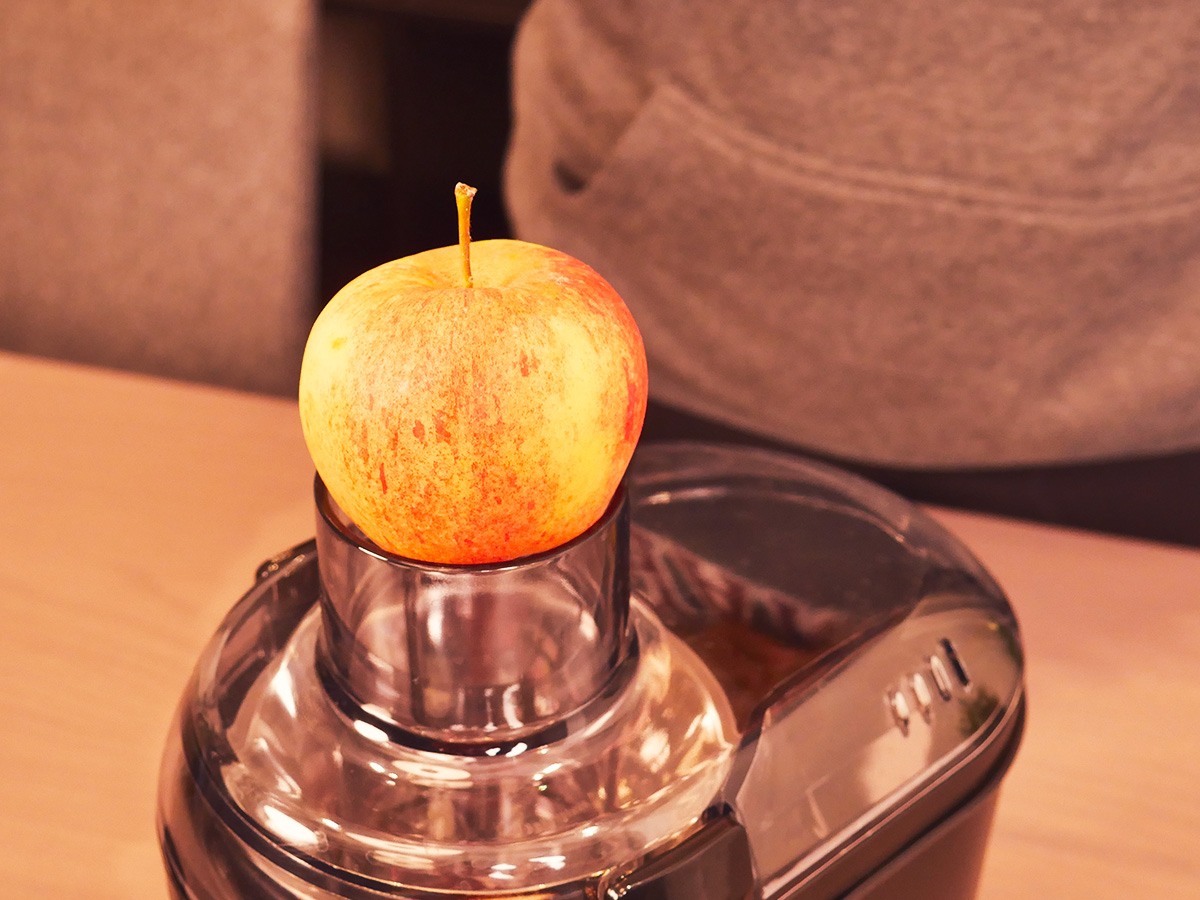
- Pulp ejection function: some compact juicers collect the pulp in an internal container, but most eject the pulp out of the juicer into a specially designed container to fit the juicer. This allows you to make a little more juice without having to turn off the juicer while it’s running, open it and then empty the pulp collector.
- Pulp and juice collectors: for both these items, it is the volume that counts. For the waste, choose a machine with a pulp collector of at least 500 ml, or even 1 L, because after pressing, a large quantity of waste can end up in it. For the juice, you should also opt for a large volume to avoid handling.
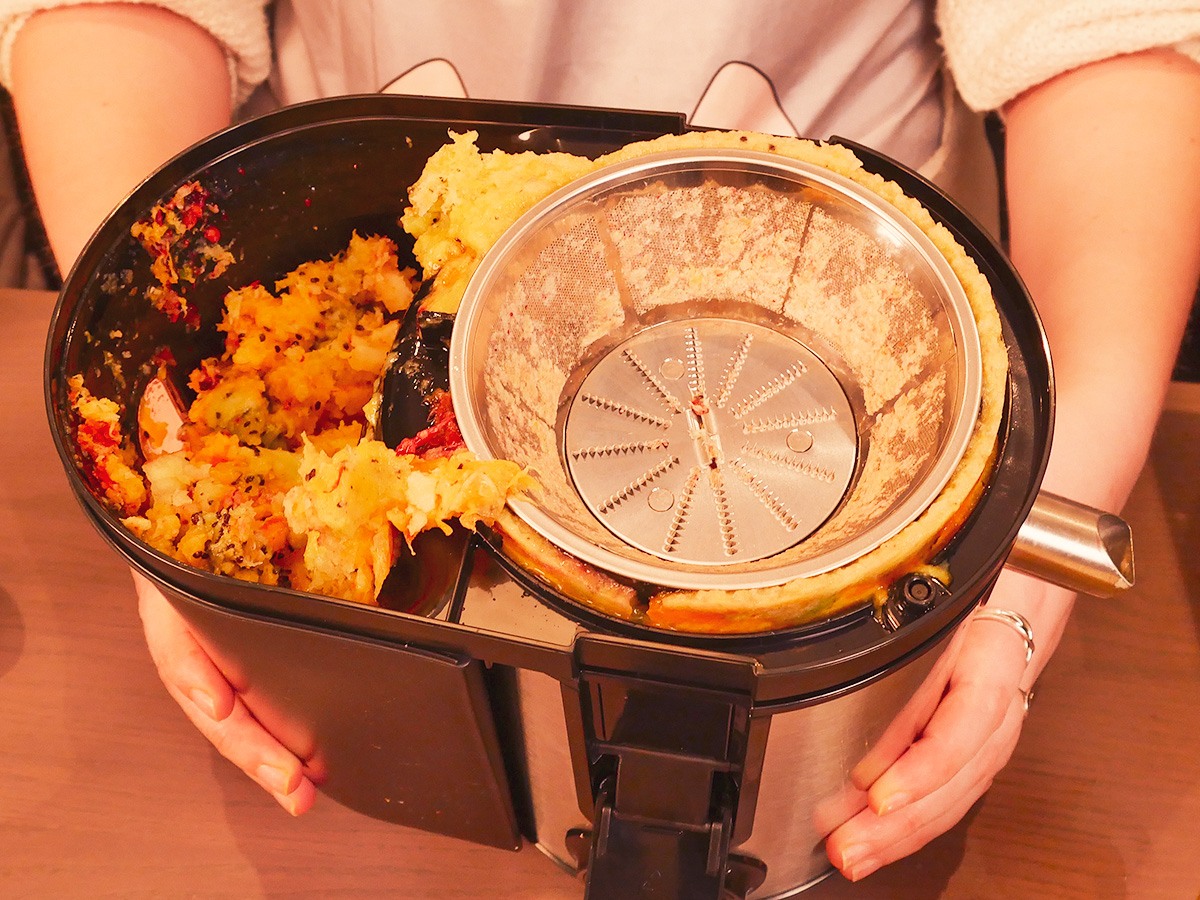
- Noise: the juicer is fast, convenient and compact, but also quite noisy. If you really cannot stand the noise, early in the morning, when you get out of bed (or when you go to bed), unfortunately, the juicer should be avoided. Note, however, that some manufacturers have thought about designing their products to be as quiet as possible (but this comes at a cost).
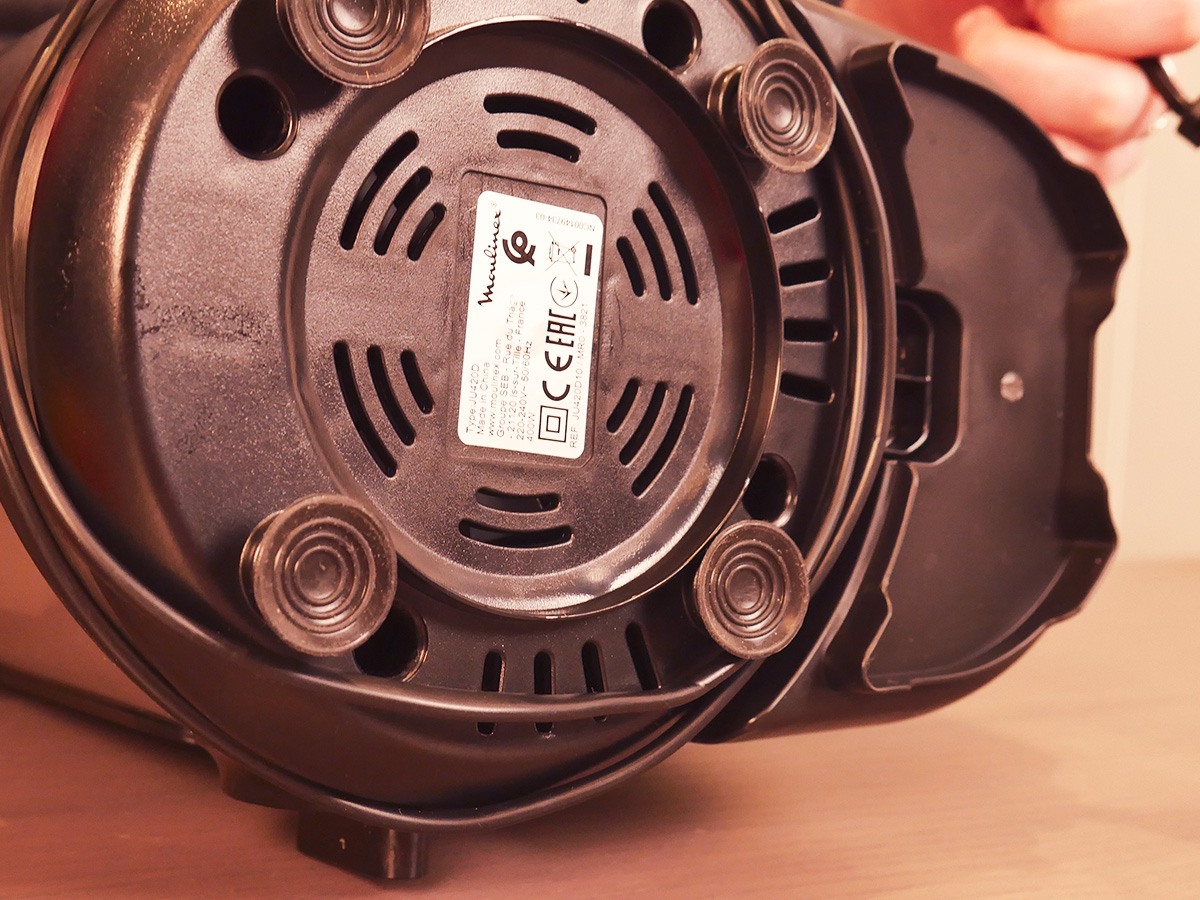
- Cable tray: to avoid your appliance taking up even more space than it should, choose a model with a cable management system to hide the appliance’s electrical wires when it is not in use. Also look at the length of the power cord. Generally, a 1m cord gives you enough length and flexibility to plug it in easily if the socket is a bit far away.
Translated by Aylin Akturk
